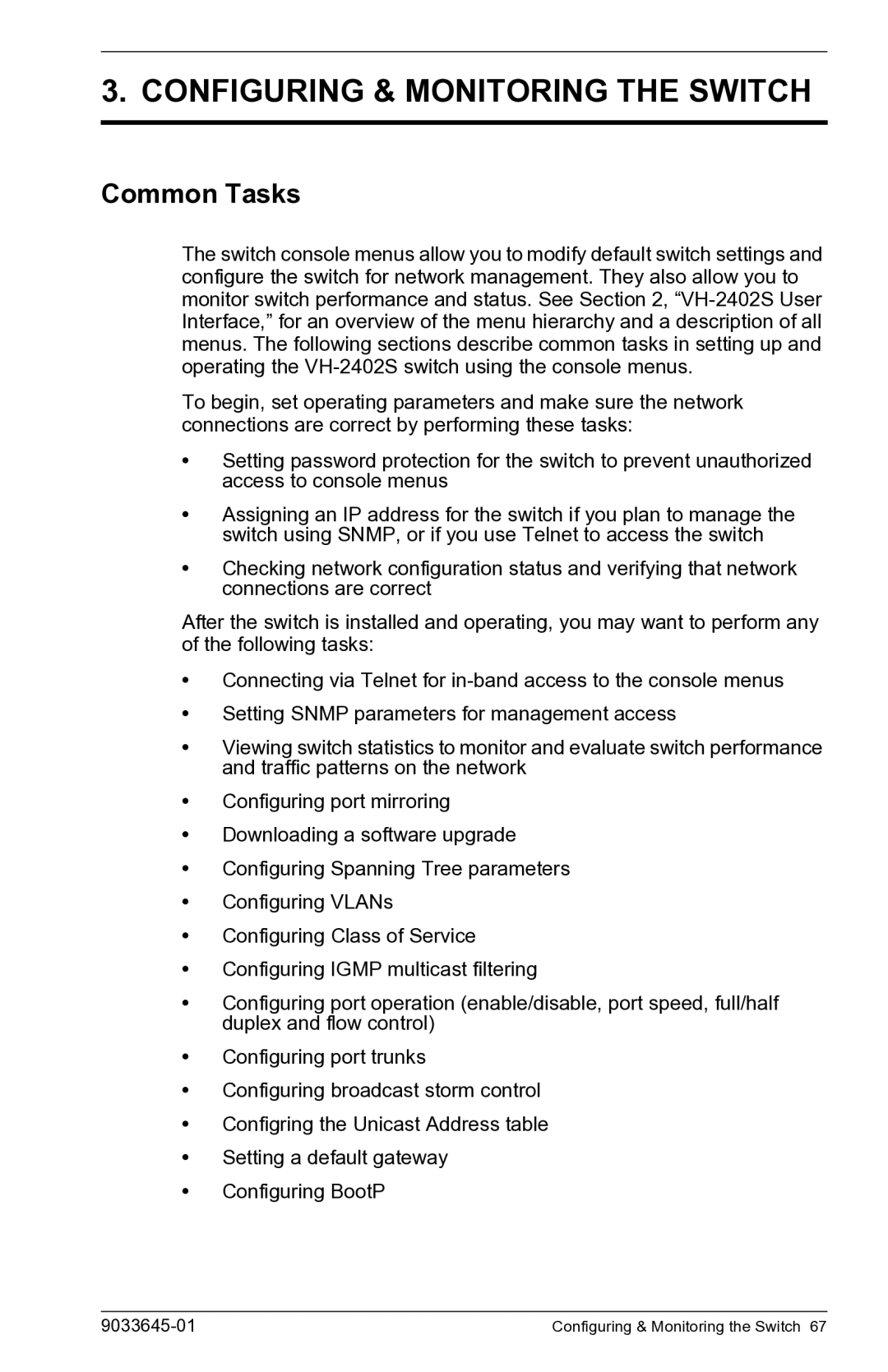
3. CONFIGURING & MONITORING THE SWITCH
Common Tasks
The switch console menus allow you to modify default switch settings and configure the switch for network management. They also allow you to monitor switch performance and status. See Section 2,
To begin, set operating parameters and make sure the network connections are correct by performing these tasks:
•Setting password protection for the switch to prevent unauthorized access to console menus
•Assigning an IP address for the switch if you plan to manage the switch using SNMP, or if you use Telnet to access the switch
•Checking network configuration status and verifying that network connections are correct
After the switch is installed and operating, you may want to perform any of the following tasks:
•Connecting via Telnet for
•Setting SNMP parameters for management access
•Viewing switch statistics to monitor and evaluate switch performance and traffic patterns on the network
•Configuring port mirroring
•Downloading a software upgrade
•Configuring Spanning Tree parameters
•Configuring VLANs
•Configuring Class of Service
•Configuring IGMP multicast filtering
•Configuring port operation (enable/disable, port speed, full/half duplex and flow control)
•Configuring port trunks
•Configuring broadcast storm control
•Configring the Unicast Address table
•Setting a default gateway
•Configuring BootP
| Configuring & Monitoring the Switch 67 |
